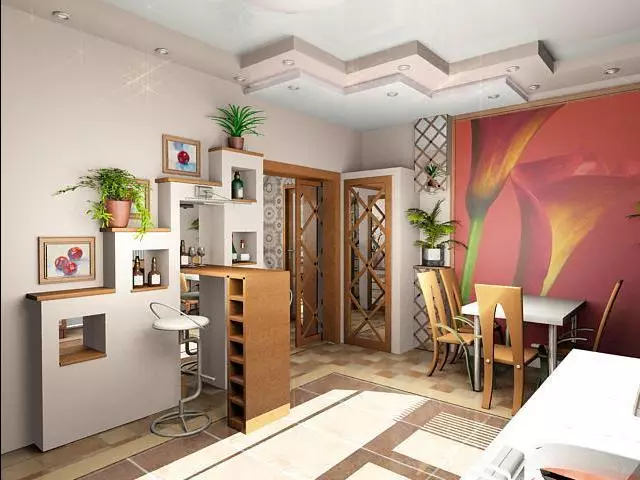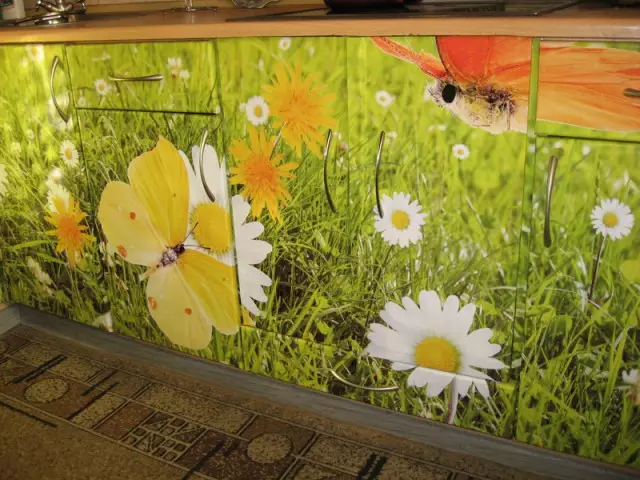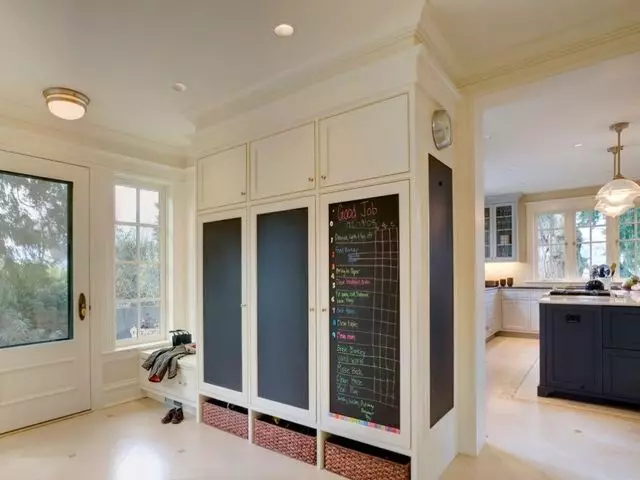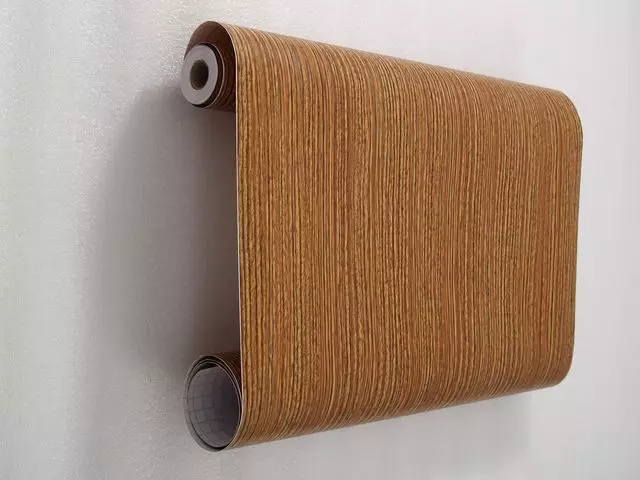
Currently, manufacturers offer a wide range of finishing materials with different design and technical characteristics. The popularity of self-adhesive wallpapers for the kitchen is increasingly increasing, work with which is easy and pleasant. They allow you to update the kitchen interior for a relatively short time, since it is not necessary to use glue to work with them.
Their outline surface is already covered with a glue basis, on the surface of which the protective film is located. And this means that it will not be necessary to spend time and strength on the interlacy of the glue of the canvases and walls of the kitchen, to conduct preliminary calculations on the shrinkage as a result of drying. No need to fear that the wallpaper will break, if you open the windows before the deadline. It is also worth noting that this type of finishing materials is characterized by a number of other important advantages:
- non-toxic;
- no moisture is afraid;
- resistant to temperature differences;
- have increased heat resistance;
- characterized by good color reproduction;
- durable;
- They have high resistance to acidic and alkaline solutions.
Wallpaper self-adhesive can be used to design not only walls, but also any kitchen interior items. With their help, you can update and radically change the appearance of the refrigerator, doors, windowsill, any kitchen furniture. At the same time, they will look neat and stylish.
You can use self-keys to designate the functional areas of the kitchen, for example, apron. Due to resistance to high temperatures, wallpapers can be applied near electrical and gas stoves. In this case, it looks like a drawing, imitating tile.
You can care for self-adhesive materials using a vacuum cleaner, as well as a wet cloth or a sponge. In this case, it is possible to completely not fear that when contacting with moisture, the product will be spoiled.
Variations of self-adhesive materials
The choice of textures and colors offered by manufacturers is currently widest. From the upper side, self-adhesive wallpaper can be manufactured from different materials. The most common today is:
- PVC;
- the cloth;
- bung.
Article on the topic: Little toilet design
In the first case, the upper side is covered with a glossy or matte film from polyvinyl chloride. Has high strength characteristics and reaches well. Ideal for salable kitchen furniture.

Satin (fabric) products are distinguished by a presentable type, performed. As a rule, in the form of photo wallpaper. Cork self-adhesive canvases are an improved type of cork and differ in properties inherent in the material from which they are made - high heat and sound insulation. They are the most expensive of all named species, but also the most durable. In the case of applying in the production of an additional wax layer, the service life increases to 20 or more. Suitable for making any living room.
Self-adhesive canvas with a chalk coating are popular, whose feature is the ability to draw chalk on them. They are considered to be especially fashionable.

Wallpaper also produced, on the surface of which the texture of wood, leather, stone is repeated. The canvas, imitating the tree, except for applying on the walls, is often used to design doors.

Application rules
Before starting sticking, you need to prepare work - remove the sockets, switches and clean the walls. It is important to eliminate all existing wall defects, as self-keys will not be able to hide even small flaws and roughness. The result of the work has depends on the quality of the walls of the walls. Kitchen walls must be smooth, smooth and dry. Because after the removal of defects on the walls, dust, sandbanks, or hairs from the brush should be cleaned slightly wet sponge.
Next, it is necessary to determine where the first strip will be applied, and draw a guide line from the ceiling to the wall to the wall. Glue better start from the place hidden from the eyes. In this case, the inclusion of the drawing will not be noticeable when the last and first canvase is connected.
If the repair work is carried out in an old house with uneven walls, and the alignment of the angles is not planned, then it is undesirable to choose an angle on the beginning of the blowing, since the gap can be formed at the location. You can start from the angle if the self-adhesive canvases will be applied only on one wall.
Article on the topic: Facade plaster to protect your home from rain and frost and decorative design
When cutting the bands, it is desirable to leave an additional length (5-6 cm), which will allow them to adjust them to match the patterns. The first must be glued exactly through the pencil line. Start applying the strip from top to bottom. This ensures the most even adherence. To glue the cloth to perform the following steps:
- attach a strip to the wall;
- Gradually remove the protective film and press the cloth, carefully smoothing it from the center to the edges;
- in the case of the formation of air bubbles, pierce their needle;
- Go through the wall with a roller or a clean cloth from above and from the center to the edges.
In the same way, all the canvas are applied, the edges of which in the process of work are thoroughly aligned to ensure the correct combination of the pattern. It is recommended to periodically check that the stacked bands are clearly vertically located. The bands are applied with a lift with a lifting of approximately 1 cm. In the joint locations, it is important to prevent snaps and wrinkling using a soft brush or cloth to smooth out. Excess glue immediately eliminate with a wet sponge. Surplus wallpaper is trimmed with a sharp knife before they dry.
In case the wallpaper is planned to glue on the surface of glass, metal or plastic, before removing the film they must be moistened.
Removing self-keys is also not difficult. To dismantle, it will not be necessary for special efforts for long discharge and robbing. Working hours is significantly reduced, as self-adhesive materials are removed by strips.
